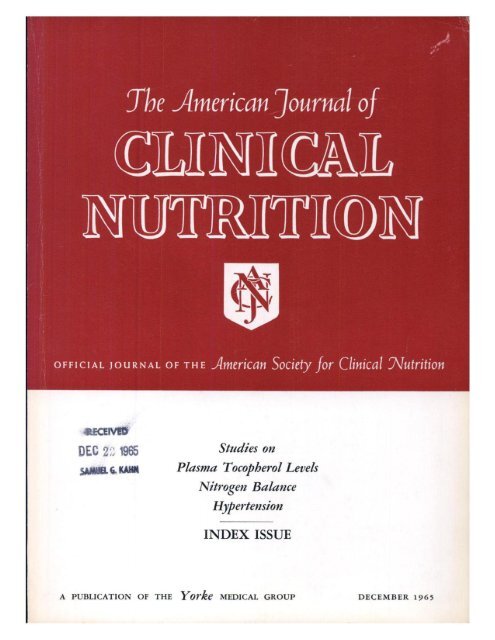Investigating eating architecture and the impact of the precision of recorded eating time: a cross-sectional study
IF 6.5
1区 医学
Q1 NUTRITION & DIETETICS
引用次数: 0
Abstract
Background
The precision of recorded eating times directly affects the estimation of eating architecture, that is, size, timing, and frequency of eating. The impact of imprecise timing on estimates and associations of eating architecture with health remains unclear.
Objectives
We compared eating architecture variables derived from precise with those of broad timing methods and examined associations with anthropometric-related and diet-related outcomes.
Methods
Cross-sectional data came from 3-d diet diaries of 7-y-old children in the Avon Longitudinal Study of Parents and Children. We derived mean size, timing, and frequency of eating, using exact times (precise, n = 4855) and midpoint meal slot times (broad, n = 7285). Intraclass correlation coefficients (ICCs) estimated agreement between methods. Bland–Altman analysis determined mean difference and limits of agreement (LOAs). Correlations (95% CIs) estimated associations between eating architecture variables and anthropometric-related or diet-related traits.
Results
Agreement varied from moderate to excellent for size (ICC: 0.75), last or first time (ICC: 0.80 or 0.58), and frequency (ICC: 0.43) of eating occasions. Broad times underestimated eating frequency (2.2 times/d; LOA: −1, 5) and overestimated size (83 g; LOA: −179, 13), last time (50 min; LOA: −142, 42), intermeal intervals (68 min; LOA: −126, −11), and eating window (49 min; LOA: −161, 63). Directions of eating architecture intercorrelations were consistent regardless of time precision but varied in magnitude, for example, larger eating occasion size correlated with lower eating frequency but was stronger with precise time (rprecise = −0.54; 95% CI: −0.56, −0.52; rbroad = −0.24; 95% CI: −0.27, −0.22). Correlations with anthropometric-related and diet-related outcomes were also directionally consistent.
Conclusions
Precise timing improves the estimation of eating architecture. Differences in estimation will affect descriptions of children’s eating habits and possibly dietary guidance. However, consistent directional associations across timing methods suggest that broad times could provide a pragmatic method for investigating eating architecture associations in large samples.
调查进食结构和记录进食时间的精确度的影响:一项横断面研究。
背景:记录进食时间的准确性直接影响对进食结构的估计,即进食的大小、时间和频率。不精确的时间对饮食结构与健康的估计和关联的影响尚不清楚。目的:我们比较了精确计时法和广义计时法得出的饮食结构变量,并检查了与人体测量学和饮食相关结果的关联。方法:横断面数据来自雅芳父母与儿童纵向研究中7岁儿童的3天饮食日记。我们利用精确时间(precise, n=4855)和中点用餐时间(broad, n=7285)推导出平均大小、时间和进食频率。类内相关系数(ICC)估计方法之间的一致性。Bland-Altman分析确定了平均差值和一致限(LOA)。相关性(95%置信区间)估计饮食结构变量与人体测量或饮食相关特征之间的关联。结果:进食场合(EOs)的大小(ICC 0.75)、最后一次或第一次(ICC 0.80或0.58)和频率(ICC 0.43)的一致性从中等到优异不等。广泛低估进食频率(2.2次/天);LOA - 1,5)和高估的尺寸(83g;LOA - 179,13),最后一次(50min;LOA - 142,42),餐间间隔(68min;LOA -126, -11)和进食窗口(49min;Loa - 161,63)。饮食结构相互关系的方向与时间精度无关,但程度不同,例如,较大的EO尺寸与较低的饮食频率相关,但与精确时间相关(rprecise=-0.54 (95% CI -0.56, -0.52);Rbroad =-0.24(-0.27, -0.22))。与人体测量和饮食结果的相关性也具有方向性一致性。结论:精确的时间可以提高对饮食结构的估计。估计的差异将影响对儿童饮食习惯的描述,甚至可能影响饮食指导。然而,在时间方法之间一致的方向关联表明,广泛的时间可以为在大样本中调查饮食建筑关联提供实用的方法。
本文章由计算机程序翻译,如有差异,请以英文原文为准。
求助全文
约1分钟内获得全文
求助全文
来源期刊
CiteScore
12.40
自引率
4.20%
发文量
332
审稿时长
38 days
期刊介绍:
American Journal of Clinical Nutrition is recognized as the most highly rated peer-reviewed, primary research journal in nutrition and dietetics.It focuses on publishing the latest research on various topics in nutrition, including but not limited to obesity, vitamins and minerals, nutrition and disease, and energy metabolism.
Purpose:
The purpose of AJCN is to:
Publish original research studies relevant to human and clinical nutrition.
Consider well-controlled clinical studies describing scientific mechanisms, efficacy, and safety of dietary interventions in the context of disease prevention or health benefits.
Encourage public health and epidemiologic studies relevant to human nutrition.
Promote innovative investigations of nutritional questions employing epigenetic, genomic, proteomic, and metabolomic approaches.
Include solicited editorials, book reviews, solicited or unsolicited review articles, invited controversy position papers, and letters to the Editor related to prior AJCN articles.
Peer Review Process:
All submitted material with scientific content undergoes peer review by the Editors or their designees before acceptance for publication.

 求助内容:
求助内容: 应助结果提醒方式:
应助结果提醒方式:


